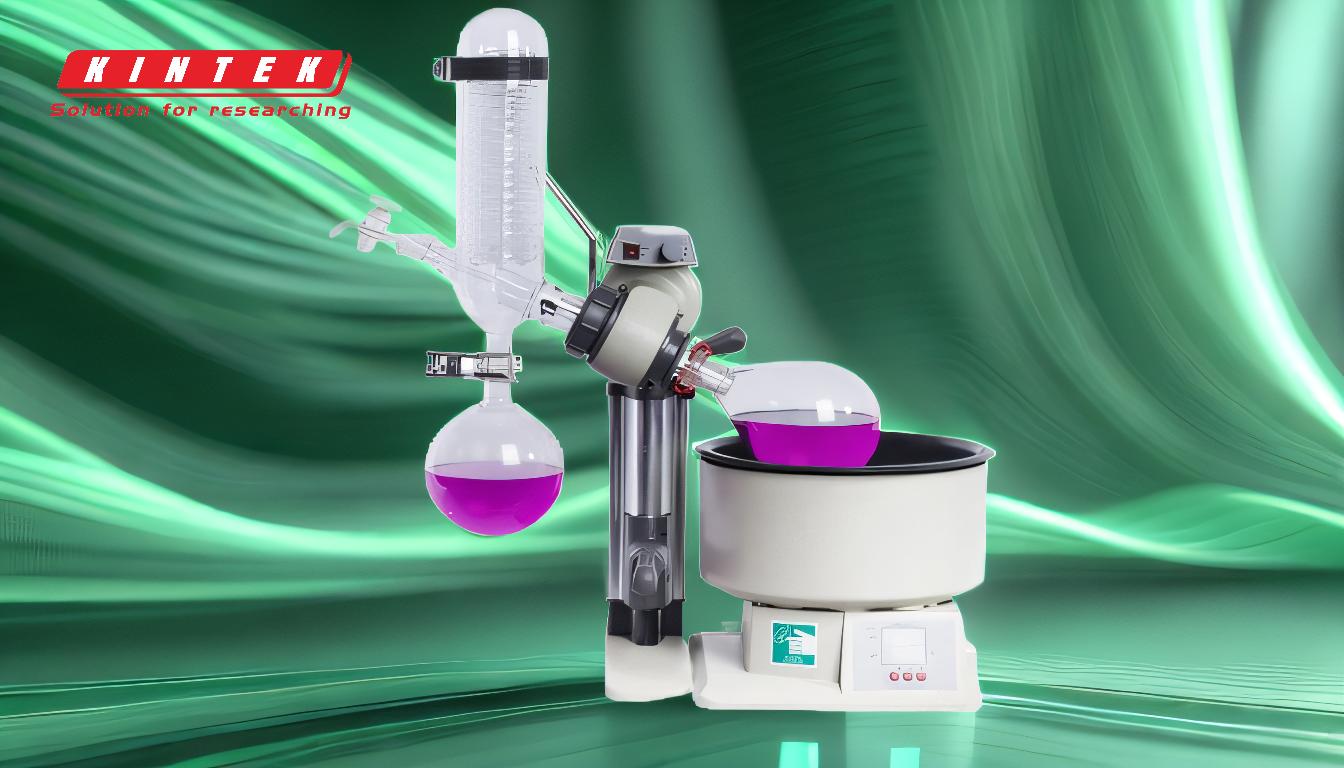Bumping in rotary evaporation refers to the sudden and violent boiling of a liquid under vacuum conditions, often resulting in the expulsion of the liquid from the container. This phenomenon occurs when a liquid superheats due to a lack of nucleation sites, leading to rapid boiling once nucleation finally occurs. Bumping can cause sample loss, contamination, and damage to equipment, making it a significant concern in laboratory settings. To mitigate bumping, careful control of vacuum strength, temperature, and the use of techniques like boiling chips or homogeneous phases are recommended. Understanding and preventing bumping is crucial for efficient and safe rotary evaporation processes.
Key Points Explained:

-
Definition of Bumping:
- Bumping is the sudden and violent boiling of a liquid under vacuum conditions, often leading to the expulsion of the liquid from the container.
- It occurs when a liquid superheats due to a lack of nucleation sites, causing rapid boiling once nucleation finally occurs.
-
Causes of Bumping:
- Rapid Temperature Increase: Sudden heating can cause the liquid to superheat, leading to bumping.
- Rapid Pressure Reduction: A quick drop in pressure can also cause the liquid to boil violently.
- Smooth, Clean Glassware: The lack of nucleation sites in smooth, clean glassware increases the likelihood of bumping.
- De-gassing: Repeated heating and cooling cycles progressively de-gas the liquid, reducing the number of nucleation sites and increasing the risk of bumping.
-
Consequences of Bumping:
- Sample Loss: The violent boiling can cause the sample to be expelled from the container, leading to loss of material.
- Contamination: Expelled liquid can contaminate other samples or equipment.
- Equipment Damage: In extreme cases, the force of bumping can break the container or damage the rotary evaporator.
- Time and Resource Waste: Bumping can necessitate repeating the entire procedure, wasting time, effort, and resources.
-
Prevention of Bumping:
- Regulate Vacuum Strength: Carefully control the strength of the vacuum to provide an even rate of evaporation.
- Control Bath Temperature: Maintain a steady and appropriate bath temperature to prevent sudden boiling.
- Use Boiling Chips: Adding boiling chips or other nucleation agents can help create uniform boiling and prevent bumping.
- Homogeneous Phases: Ensure the liquid is in a homogeneous phase before evaporation to reduce the risk of bumping.
-
Handling Bumping Incidents:
- Immediate Response: If bumping occurs, remove the flask and bump trap as a unit to prevent further loss or damage.
- Rinse with Solvent: Rinse the interior of the trap with several mL of solvent to recover the sample.
- Check for Drain Holes: If the trap has drain holes, the sample will flow back into the flask. If not, additional steps may be required to recover the sample.
-
Safety Considerations:
- Hazard to Lab Personnel: The rapid expulsion of boiling liquid poses a serious hazard to lab personnel.
- Proper Training: Ensure all personnel are trained in the proper use of rotary evaporators and understand the risks associated with bumping.
- Use of Safety Equipment: Always use appropriate safety equipment, such as splash guards and protective eyewear, when working with rotary evaporators.
By understanding the causes and consequences of bumping, and implementing preventive measures, laboratory personnel can minimize the risks associated with this phenomenon and ensure a safer and more efficient rotary evaporation process.
Summary Table:
| Aspect | Details |
|---|---|
| Definition | Sudden, violent boiling of liquid under vacuum, causing expulsion. |
| Causes | Rapid heating, pressure reduction, smooth glassware, de-gassing. |
| Consequences | Sample loss, contamination, equipment damage, time/resource waste. |
| Prevention | Regulate vacuum, control temperature, use boiling chips, ensure homogeneity. |
| Handling Incidents | Remove flask and trap, rinse with solvent, check drain holes. |
| Safety Considerations | Hazard to personnel, proper training, use of safety equipment. |
Ensure safe and efficient rotary evaporation—contact our experts today for tailored solutions!










